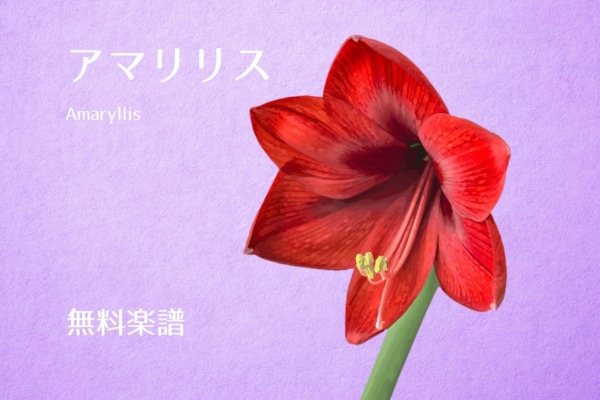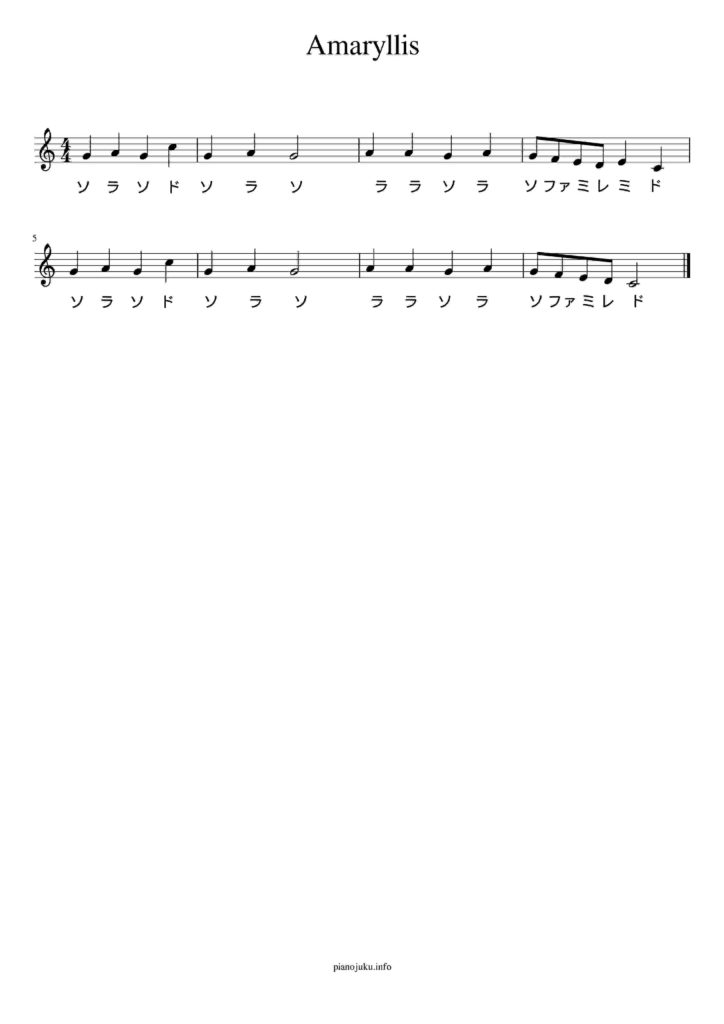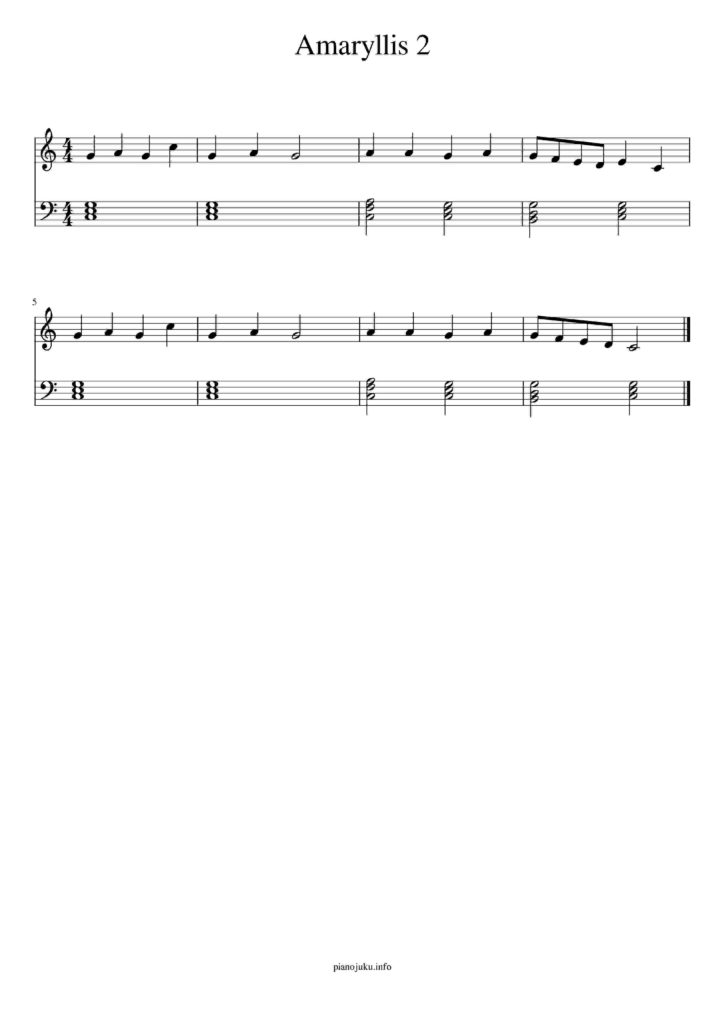
小学校の音楽の時間に習う童謡「アマリリス」。
歌うことはもちろん、リコーダーでの演奏を経験したこともあるかと思います。
跳ねるように歌う「スタッカート」で始まることから、大人になってもこの曲のメロディーを覚えている方は多いのではないでしょうか。
今でも家電や街の放送、駅の電車の発車メロディなどで流れているところがあるようですね。
余談ですが、私は当時、歌詞よりも音階(ドレミ・・)で歌って覚えていたので家に帰ってから改めてピアノで演奏していた記憶があります。
そのためこの記事を書きながら、当時を思い出してとても懐かしい気持ちになりました。
話はそれましたが、今回はそんな童謡「アマリリス」の無料のピアノ楽譜を紹介していきます。
曲の説明
アマリリスは日本で作られた童謡ではなく、フランスで民謡として親しまれている曲です。
作られたのは1600年代とされていて、作曲者は当時の国王のルイ13世とする説や、宮廷に仕えていた音楽家だとする説があるようです。
この曲はガボット(ガヴォット)という舞曲の一つです。
わかりやすく説明するとガボットは、当時の王宮のフォークダンスで使われていた音楽です。
そのため、ややゆっくりしたテンポの中で抑揚をつけたり、流れるようなテンポで演奏したりすることが多いです。
このアマリリスも同じようなメロディーですね。
曲を演奏するときはこういった時代背景もしっかり頭に入れておきましょう。
単に曲を演奏するだけでなく、何に使われていたかを考えながら演奏することでレベルの違う演奏になりますよ。
曲を忘れた方は↓コチラを聞いて思い出してください。
アマリリス 無料ピアノ楽譜
では楽譜を紹介していきます。
とてもシンプルな童謡のため、初めてピアノを演奏する方でもすぐに弾けるようになるような曲です。
またスタッカートが入った特徴的な曲ですので、初心者の練習用としてもぴったりな簡単な曲ですね。
楽譜をクリックするとリンク先へ移動します。
いくつかの種類を紹介していますので、気に入った楽譜を使われてみてください。
無料楽譜①(ドレミ付き)
最初に紹介するのはドレミがついたメロディー譜です。
ピアノだけでなくリコーダーやピアノアプリなどでも演奏することができます。
楽譜にはスタッカートをあえて記載していませんが、余裕があれば意識して演奏しましょう。
※厳密にはこの曲は弱起(アウフタクト)ですが、特に初心者向けの楽譜に関してはそのことを無視して作成していますのでご了承ください。

きれいな画像のPDFはコチラ
無料楽譜②
次に紹介するのは①の楽譜に簡単な伴奏が入った初心者向けの楽譜です。
左手の和音も3パターンしかないため、ピアノで右手がスラスラ弾けるようになったらすぐに演奏できるようになります。

きれいな画像のPDFはコチラ
無料楽譜③(中級者向けアレンジ)
最後に紹介するのは、アレンジが入った中級者向けの楽譜です。
②よりも数段階レベルの高い楽譜ですので、初心者の方はご遠慮ください。
大きく2つのテーマを交互に演奏していきます。
たしか移調も3回はあったと思います。
興味のある方はチャレンジしてみてください。
ちなみに私は終盤の短前打音が難しかったので、無視して演奏しました。

ピアノは独学で趣味 says
三年ぶりに独学でピアノレッスンを再開したので、又「1」からやり直しをするまでに腕が落ちてしまいました。
そうは言ってもバイエル止まりではありましたが。
アマリリスの簡単な伴奏入りは2日目でマスター。
今日は異なる曲に挑戦です。